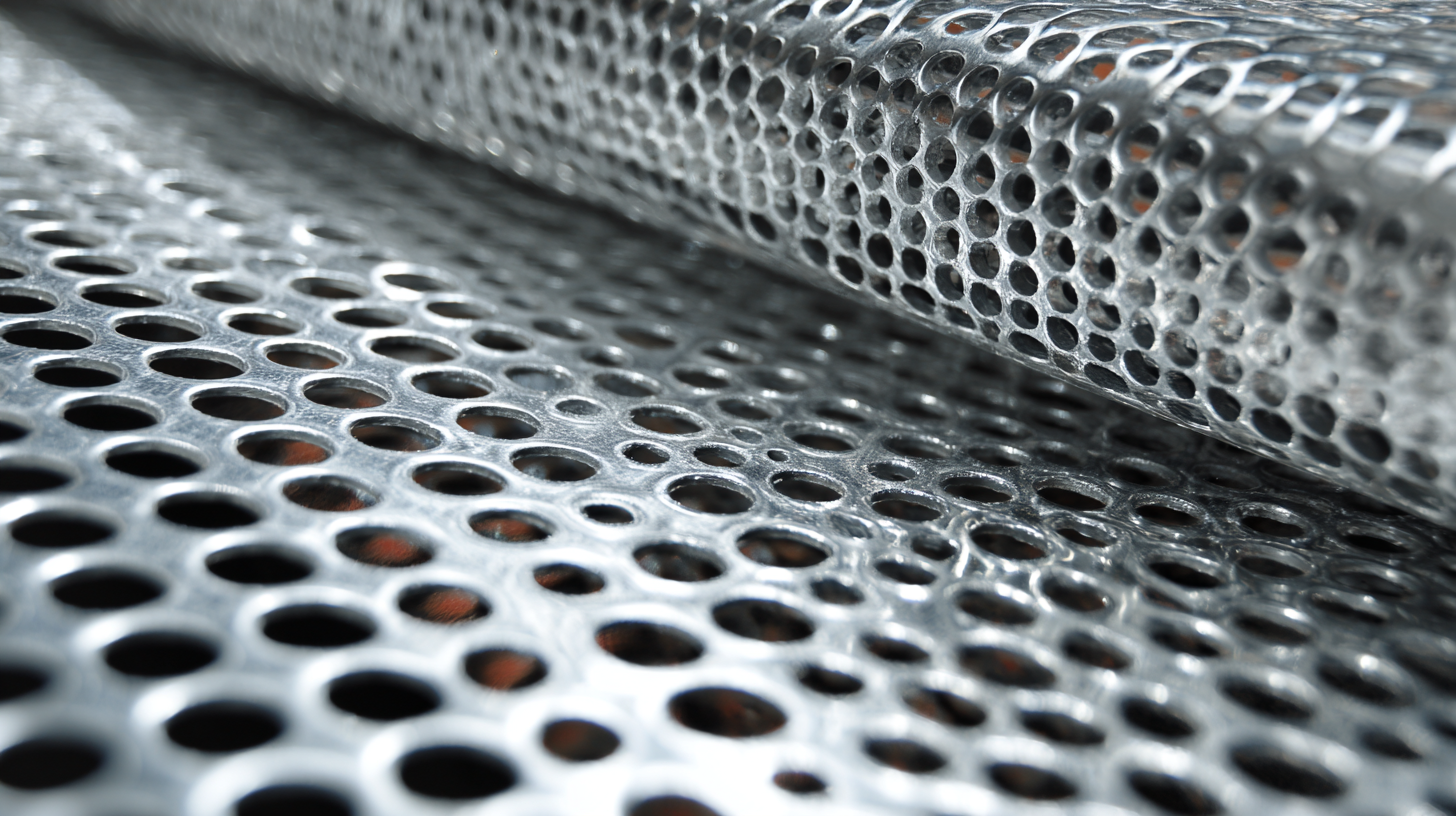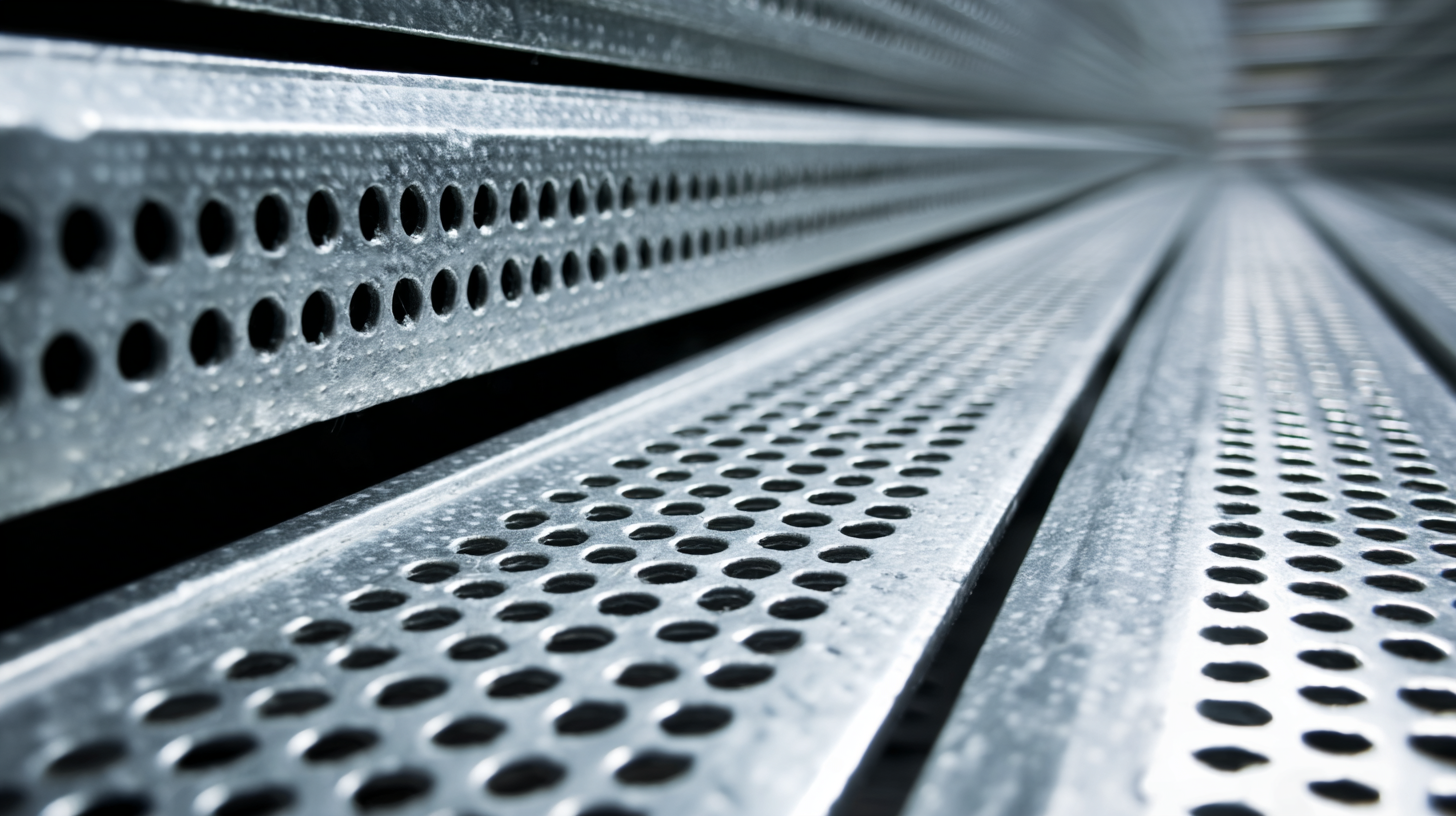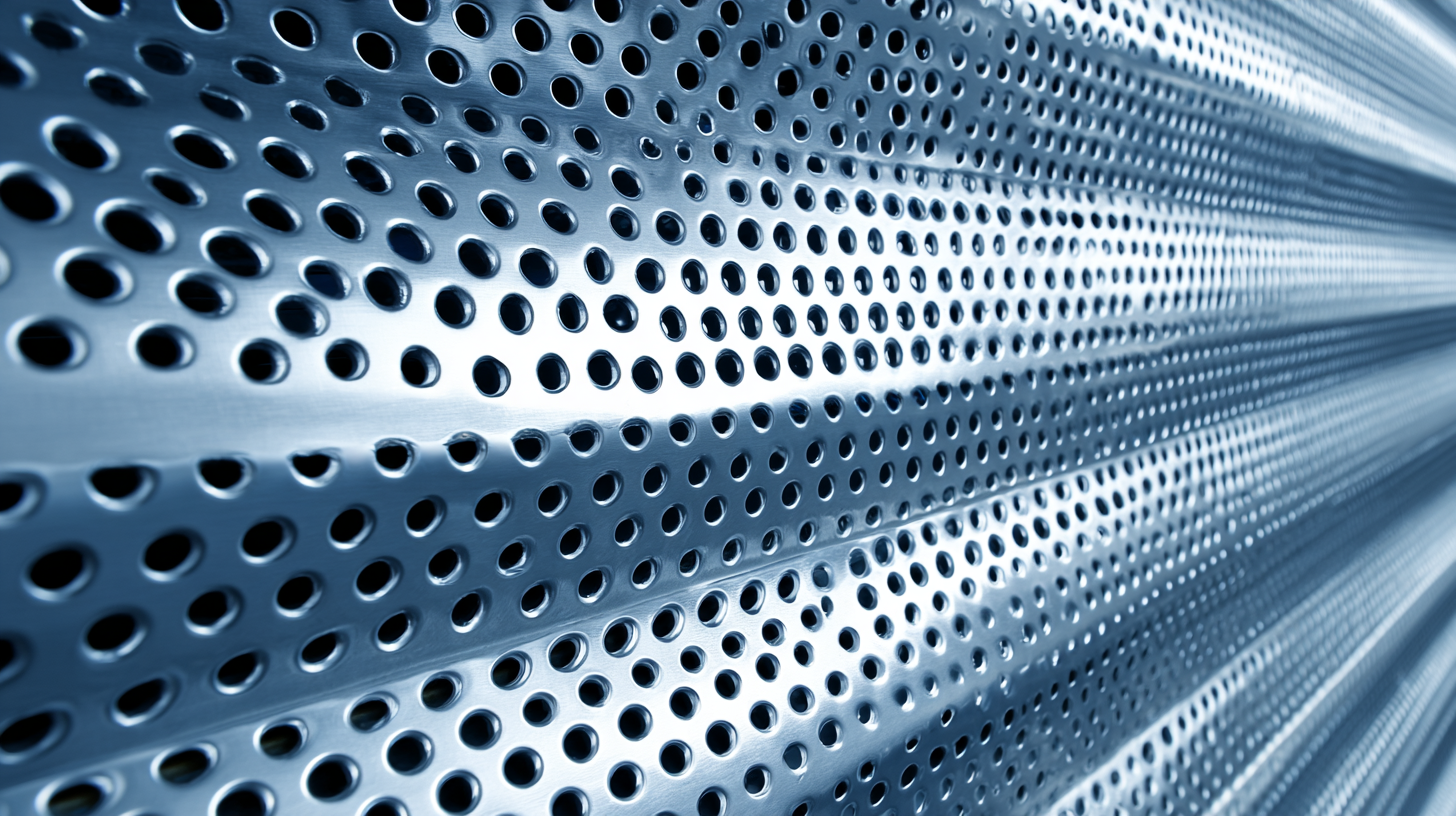The demand for perforated corrugated metal has surged in recent years, reflecting a broader trend towards sustainable and versatile building materials. According to a recent market analysis, the global corrugated metal industry is expected to grow at a CAGR of 6.5% from 2021 to 2028, with perforated variants leading the way due to their unique combination of aesthetic appeal and functional benefits. This type of material not only enhances airflow and light penetration but also plays a crucial role in acoustic performance and structural integrity. As industries increasingly prioritize sustainable practices, finding the best supplier for perforated corrugated metal products is essential for maximizing both performance and ecological efficiency. This comprehensive guide will explore essential factors to consider when selecting a supplier, ensuring that businesses can meet their specific needs while contributing to a greener future.

Perforated corrugated metal is an increasingly vital material across various industries due to its unique properties that combine strength, durability, and aesthetic appeal. According to a recent report from the Metal Construction Association, the use of perforated metal has seen a 15% growth in the architectural sector alone, emphasizing its significance in building facades, screens, and sunshades. This versatility allows companies to enhance both functionality and visual design, making it a favored choice for modern construction projects.
In the automotive and aerospace industries, perforated corrugated metal serves crucial roles in sound attenuation and weight reduction. A study by the International Journal of Vehicle Design highlights that using lightweight perforated metals can reduce vehicle weight by up to 20%, contributing to better fuel efficiency and lower emissions. As industries strive for sustainable practices, integrating such materials is more important than ever to achieve eco-friendly goals.
Tip: When selecting a supplier for perforated corrugated metal, prioritize those who provide customization options to meet specific project requirements. Additionally, always request samples to assess the quality and durability of the materials before making a large investment. This ensures that the chosen products align perfectly with both functional and aesthetic goals.
When evaluating potential suppliers for perforated metal products, it’s crucial to consider several key factors to ensure you are making the right choice. First, assess the supplier's experience and specialization in perforated corrugated metal. A supplier with a strong background in this niche is likely to provide higher quality products and better customer service. Look for a portfolio showcasing their past projects and testimonials from satisfied clients to gauge their reliability.
Another important factor is the technology and capabilities of the supplier’s manufacturing processes. Advanced machinery and techniques can lead to more precise perforations and a wider variety of designs. Engage with the supplier to understand their production methods and quality control measures.
**Tip:** Request samples to evaluate the quality of the perforated metal products firsthand. This can help in making a more informed decision based on texture, strength, and durability.
Finally, consider the supplier's responsiveness and communication style. A supplier that is attentive and easy to communicate with can facilitate a smoother workflow and quicker resolutions to any issues that may arise.
**Tip:** Organize initial meetings or calls to discuss your specific needs, as this will provide insight into their customer service approach.
| Supplier Location | Production Capacity (units/month) | Lead Time (weeks) | Quality Certifications | Customer Ratings (out of 5) | Pricing (per unit) |
|---|---|---|---|---|---|
| North America | 10,000 | 4 | ISO 9001, ASTM | 4.5 | $2.50 |
| Europe | 15,000 | 6 | ISO 14001, CE Mark | 4.7 | $3.00 |
| Asia | 20,000 | 8 | ISO 9001, OHSAS 18001 | 4.2 | $1.75 |
| South America | 8,000 | 5 | ISO 9001 | 4.0 | $2.20 |
| Africa | 5,000 | 7 | ISO 9001 | 3.8 | $2.75 |
When it comes to selecting the best supplier for perforated corrugated metal products, a critical aspect to consider is the cost-effectiveness of various perforation techniques and materials. The choice between different materials, such as plastics and metals, can significantly influence both initial investment and long-term value. For instance, biodegradable options may present a higher upfront cost but could lead to savings in waste management and environmental compliance. Analyzing the cost rates for personnel and patients alike in relevant industrial applications can provide valuable insights into the overall operational expenses.

Furthermore, understanding the impact of different perforation patterns on structural performance can greatly affect the utility of these products. Research indicates that various perforation techniques can alter the load-carrying capacity of materials, making it essential to assess not only the aesthetic and functional aspects but also the longevity and durability of the perforated designs. As the industry gears towards innovation, the optimization of geometrical parameters through energy and exergy analysis can result in enhanced efficiency, leading to more sustainable and cost-effective solutions for future applications.
When sourcing perforated corrugated metal products, understanding and adhering to compliance and quality standards are essential for ensuring both safety and durability. Various industries, including construction and manufacturing, require these products to meet specific regulations that govern material strength, durability, and environmental impact. Familiarity with standards set by organizations such as ASTM International and ISO can guide buyers in selecting the right supplier. These organizations provide guidelines that help in evaluating the mechanical properties of the materials and ensure they can withstand the rigors of their intended applications.
Moreover, quality assurance processes cannot be overlooked. Suppliers should have established protocols for testing and inspecting their products, ensuring that they not only comply with regulations but also deliver consistent quality. Regular audits of manufacturing processes and material sourcing can significantly influence the performance of perforated corrugated metal products. Collaborating with a supplier who prioritizes these compliance and quality measures will not only enhance product reliability but will also mitigate potential risks associated with substandard materials.
The manufacturing landscape for perforated corrugated metal products is witnessing significant transformation, driven by emerging trends and innovations. According to a recent report by MarketsandMarkets, the global perforated metal market is expected to reach $2.77 billion by 2025, growing at a CAGR of 6.4%. This growth is fueled by increasing demand across various end-use sectors such as construction, automotive, and consumer goods.

Recent innovations focus on enhancing the efficiency and sustainability of production processes. Advanced technologies like laser cutting and computer numeric control (CNC) are streamlining manufacturing, allowing for more intricate designs and reducing waste. Furthermore, the adoption of eco-friendly materials and coatings is becoming prevalent, as manufacturers aim to meet environmental regulations and consumer expectations for sustainable products. These advancements not only boost product performance and aesthetic appeal but also ensure compliance with increasingly stringent industry standards, making perforated metal products more versatile and marketable than ever.
